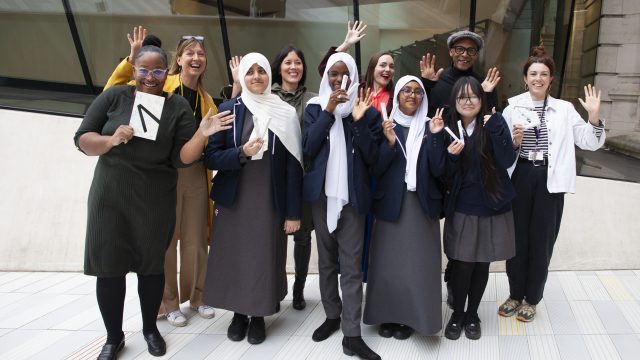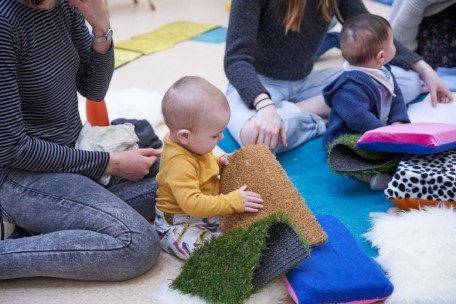The V&A has the greatest collection of Italian renaissance maiolica in the world – over a thousand pieces in all. This dish from the Renaissance Galleries, displayed in a case devoted to objects connected with marriage and childbirth, is one of my favourites. Measuring almost 47 cm in diameter, it depicts a group of infants climbing a tree, picking and eating its fruit. On the upper edge of the rim are displayed the arms of Matthias Corvinus, King of Hungary and his second wife, the Neapolitan princess Beatrice of Aragon, whom he married in 1476. It has been suggested that the dish was made at the time of the marriage, perhaps as a gift forming part of the negotiations.
The imagery, with its robust children plucking fruit – symbolising the hoped-for fruitful union – would be appropriate in this context, as would the isolated castle on a hill in the background, signifying chastity, a desired quality in a bride. Recently, however, it has been proposed that stylistically the dish appears to be la little later than 1476, the date of the marriage. The fruit-picking children may not therefore allude to fertility but may simply have been chosen as an attractive and appropriate motif for tableware, or perhaps as an illustration of St Paul’s observation that ‘if any would not work, neither should he eat’. Although this stricture seems slightly severe for such a festive-looking object, a similar dictum is inscribed on a Florentine maiolica plate of similar date in the V&A’s collection.

Unknnown Maker, Maiolica Dish, Pesaro, Italy, Tin – Glazed Earthenware, Medieval and Renaissance Galleries, Room 64, Case 2, Mus Ref: 7410 – 1860 © Victoria and Albert Museum, London
Whatever the occasion for its manufacture, this dish is a luxury object of the highest order. Maiolica is the name given to tin-glazed earthenware, a ceramic technique that flourished in Islamic Spain during the middle ages. By the early fifteenth century Italian craftsmen had begun to produce maiolica, although it was not until the end of the century that their skill and artistry truly rivalled that of the Spanish ceramicists. What distinguishes Italian renaissance maiolica from its Spanish counterpart is the use of pictorial decoration, as well as geometric patterns inspired by classical decorative forms, such as the fish-scale motif on our dish.
The dish would have been novel as well as expensive, the type of object that might have replaced more traditional silver and gilt tableware as part of the display on a sideboard or credenza at a banquet, signifying the owner’s status and familiarity with the latest fashions. Matthias Corvinus was profoundly interested in renaissance art and culture, importing objects and also craftsmen from Italy to his court in Hungary. Our dish is one of four surviving pieces from what was presumably a large set of tableware made for the king, whether to mark his marriage or simply commissioned as one of many objects reflecting his Italianate tastes. One of these pieces, a smaller plate with no figurative decoration, is also in the V&A.

Unknnown Maker, Maiolica Dish, Pesaro, Italy, Tin – Glazed Earthenware, Medieval and Renaissance Galleries, Room 64, Case 2, Mus Ref: 7410 – 1860 © Victoria and Albert Museum, London
Although the identity of the maker of our dish is not known, he was clearly a gifted artist. With its restrained palette of blue, green, gold and white, its web of concentric patterns decorating the rim and sides, and its beautifully balanced central image of the children and the clustering fruit, it is a superb piece of design.
There’s still time to catch the excellent temporary display on renaissance maiolica in Room 146 of the Ceramics Galleries, which finishes on May 6th.
Twenty Objects for Twenty Years are a series of short pieces written by Paula Nuttall to celebrate the twentieth anniversary of our Late Medieval to Early Renaissance year course. To see previous articles take a look at the Learning Team’s blog or have a look at the previous one in the series, “Bust of Giovanni Chellini, 1456”.



Do we know who bequeathed these two exquisite dishes to the Museum and/or the history attached to them? It would be most interesting.